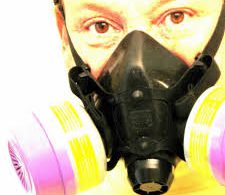Abstract: Homoeopathy system is based upon the laws. In this article effect of law of minimum dose and selection of high and low potency are explained.
Introduction
Every science has certain fundamental principles which guide the whole system. Homoeopathy is a science of medical treatment which has a philosophy of its own and its therapeutics is based on certain fundamental principles.
They are:
1. Law of similia
2. Law of simplex
3. Law of minimum dose
4. Doctrine of drug proving
5. Theory of chronic disease
6. Theory of vital force
7. Doctrine of drug dynamisation
Discovery of Minimum Dose
Dr Hahnemann in his initial application of Law of similar employed remedies in crude state and in large doses. This caused severe aggravation invariably preceded by amelioration. So, Dr Hahnemann started experimentation by reducing the dose progressively.
For venereal disease Mercuris was given at that time 1 to 5 grams according to the severity of the disease. But, Hahnemann advised to take ¼ to 1 grain .This shows that reduction of dose was insisted by Hahnemann.
In each edition, Dr Hahnemann progressed one step further in the development of the minuteness of dose. Homoeopathic dosage is based upon the law , as is the selection of the remedy is based upon the Law of similar i.e., Action and reaction are equal and opposite – This is fundamental and it is this law that guide us in the application of drugs.
This minimum dose can be explained by Arndt- Schulz law of action and reaction – It states that “small doses stimulate, moderate doses inhibit , large doses kill” i.e., weak stimuli excite physiological action of a substance, moderate one favors it and the strong stimuli retard the action or abolish altogether.
The suitableness of a medicine for any given case does not depend on accurate homoeopathic selection alone, but also depends on proper dose. Homoeopathic cure is dynamic in nature so, it must be given in the dynamic plane and never in a way to produce drug effects. Therefore, it is a minimum amount of the drug that acts upon the vital force. During potentization, no matter how far the doses are divided some amount of drug left behind in it – ‘matter is never destroyed, it may be changed in potentization, but absolute zero is never reached.’
After the administration of homoeopathic dosages, no new symptoms and drug effects will be produced, but there will be a slight aggravation of the already present symptoms immediately after the administration of homoeopathic remedies, which soon recedes and improvement continues. Only the single remedy with smallest possible dose will guide us to these happy results i.e., the suffering reduces quickly, the strength is conserved and the patient will be in a state of restored health. The quantity of action necessary to effect any change in nature is the least possible, the decisive amount is always a minimum, an infinitesimal.
A minimum force is sufficient to disturb as well as to restore balance. Therefore, we must employ just sufficient drug energy to restore the lost balance. A homoeopathic physician, therefore, employs a minimum dose and has little use for a maximum tolerated one. The maximum susceptibility exhibited by the patient to the exactly similar remedy administered in relatively large doses, led to a sharp initial aggravation of the clinical state followed by amelioration, finally the cure. This led to the progressive reduction in dose till the minimum dose just effective to affect the patient favorably was achieved .Gradually, it became the infinitesimal dose. ‘minimum the dose , better the result ’.
Effect of Minimum Dose in Dominant School
The power of minimum dose is manifest even in dominant school of medicine and it is being proven in laboratories of modern science.
The physiologist has shown the power of vitamins, in a lesser dose. It is found that one part of the crystalline form to three- trillionths has a curative action on rachitic, while one part to fifty – thousandths has destructive action to the point of causing rickets. This verifies Hahnemann’s dictum on the power of the small dose and the harmful effects of the more material dosage.
According to Different Authors
According to Stuart close:
Minimum dose is a dose which is not capable of producing symptoms when used therapeutically. Minimum dose is otherwise known as sub- physiological dose or homoeopathic dose.
There are three necessary requirements for the action of infinitesimal doses:
1. The development of special virtues to medicines by the peculiar process known as potentization
2. The increased susceptibility to medicinal impression produced by disease
3. The selection of the symptomatically similar remedy.
According to Jahr:
In any case, where the symptoms are not clearly developed and there is an absence or scarcity of characteristic features or where two or three remedies seem about equally indicated, susceptibility and reaction may be regarded as low. Therefore, remedy which seems to most similar, should be given in low potency. But, when symptoms of a case clearly indicate a remedy i.e., whose characteristic symptoms correspond closely to the characteristic symptoms of the case, we can give high potency 30th, 200th, 1000th or higher.
‘The finer, more peculiar and more characteristic symptoms of the remedy appear in a case, the higher the degree of susceptibility and the higher the potency’.
According to H A Robert:
1. Law of least action and quantity – “The quantity of action necessary to effect any change in nature is the least possible , i.e., the decisive amount is always a infinitesimal”
2. The quantity of drug required is inversely proportional to its similarity
3. The quality of action of homoeopathic medicines is determined by its quantity in its inverse ratio.
Advantages of Minimum Dose
1. To avoid unwanted aggravation.
2. The specific dynamic action which produces, the uncommon, characteristic, distinguished symptoms of the drug is produced by the minimum quantity of drug.
3. The smallness of the dose does not allow the drug to do any organic damage.
4. The law of least action.
Case
A 23yrs old male patient presented to us on 3/4/2016 with complaints of breathlessness and non- productive cough since 10yrs, but increased since 1 week. He was on Asthalin inhaler with no relief.
All his complaints were aggravated in summer season, night, by over exertion , exposing to smoke and dust and ameliorated during winter season, going to greenery places, bending forward, cold air, draft of cold air. All his presenting complaints were associated with weakness. Patient had a recurrent attack of cold and cough, fever since 10yrs.
His physical generals were: appetite- good, thirst – normal, sleep – disturbed .Thermally patient was hot.
Physical examination revealed well developed and well nourished young man, moderately dyspnoeic and coughing. The cough is deep seated harsh and non productive. Sometimes expectorate is white and stringy. On auscultation, there were rhonchi in both the lungs fields.
| LOCATION | SENSATION | MODALITIES | CONCOMITTANTS |
| Respiratory system since 10yrs | Non productive cough. Sometimes Expectorate – white , stringy Hard to expectorate Breathing difficulty |
< summer < over exertion, <dust <smoke <night >winter season >going to greenery islands >bending forward >open air >draft of cold air |
Weakness |
Evaluation of symptoms:
1. Chronic asthma < summer
2. Asthma > greenery islands
3. Asthma < night
4. Cough with scanty expectoration
Provisional diagnosis:
Bronchial asthma
Remedy prescribed:
RX Syphilinum 1M OD
Follow up:
| Date | Symptoms | Remedy |
| 11/4/2016 | Breathing difficulty better , cough slightly better Rhonchi : Heard + |
RX Placebo TID / 1week |
| 20/4/2016 | Breathing difficulty & cough better , sneezing slightly persisting | Rx Placebo TID/5 days |
| 29/4/2016 | Breathing difficulty , cough better, generals- good | Rx Placebo TID/ 1 week |
Discussion
Syphilinum was prescribed based on the key note symptoms: complaints aggravated during summer, night and ameliorated going to greenery places, cough dry hard worse at night.
Conclusion
Homeopathy system is based upon the fixed law. It makes no difference with the law if we do not follow it, but it makes a difference with our result.
The greater the number of characteristic symptoms of the disease, that are found to correspond to the drug, the less the quantity and the “higher the potency” can be used. Knowledge of the basic principle of this law explains when to select high potency and low potency.
Reference
1. Stuart close.The Genius of Homoeopathy:New Delhi:Indian books &periodicals publishers
2. Roberts H A.The principles & art of cure by homoeopathy:New Delhi :Indian books & periodicals publishers;2010
3. Dhawale M.L. Principles & practice of homoeopathy part-1 3rd edition. Bombay:
4. William Boericke. Boerickes’s new manual of homoeopathic materiamedica:NewDelhi:BJain Publishers;2000





